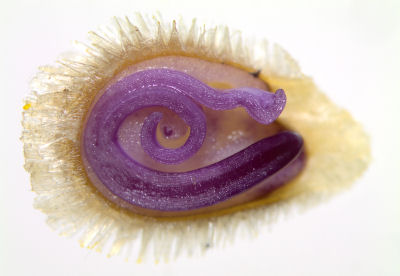|
Strona archiwalna!
Ta strona zawiera treści archiwalne, które nie były zmieniane po 23 września 2019 r. Jeśli chcesz wiedzieć więcej zapoznaj się z deklaracją dostępności
|
||||||
archiwum
 2006 2006
 2008 2008
 2010 2010
 2012 2012
 2014 2014 |
||||||

| ||||||
 |
 |
|||||

|
||||||
| strona główna założenia regulamin kalendarium wskazówki pobierz jury rejestracja zgłoszone projekty galeria gallery | archiwum kontakt | |||||
Description popularizing the research project Palm trees have the biggest seeds in the world. And ordinary coco nut does not actually bear the palm. Lodoicea, known also as sea coconut, dwarfs it with 15-kilogram seeds. Seeds of orchids are among the smallest ones. To have a better look at them, it is necessary to use a magnifying glass as they are no bigger than 0.5 mm. Between the palms and the orchids, there are a plethora of sizes, colours and shapes of all seeds around the world. People learned to appreciate the value of the part of plants a long time ago. Incredibly nutritious they were and still are staple food. Grains provide high-energy food, coffee beans make a valuable drink, they are the source of spices and medicines. And it is really hard to be surprised by the wealth hidden beneath the shells. In a nutshell, they have everything what a plant embryo needs in the most important moments of its life, until it germinates, roots and starts own photosynthesis. It is often many miles from the place where its parent plant grows. On the far and long journey, the seed provides energy and perfect protection for the genetic material containing instruction for the development of a plant. Abstract Flow cytometry is a fast and accurate method to estimate nuclear DNA content in plants. Ana-lyzed plant material generally consists of fresh and young leaves, which have majority of cells in the G0/G1 phase of the cell cycle, and allows to obtain good quality histograms. However, leaves of some plant species (e.g. trees, shrubs or herbs) may contain secondary metabolites, usually of phenolic nature, which disturb the process of staining chromatin with fluorochrome. It is hard to obtain reliable results in the presence of these compounds . Thus, for this kind of material, it is necessary to develop nuclei isolation buffers containing an antioxidant, which eliminates the effect of these compounds on nuclei staining. Although there is no universal procedure for all the 'difficult' species, to completely eliminate the negative effect of inhibitors, nuclei extraction from seeds seems to be very promising. Seeds seem to be a more convenient material for genome size estimation since the substances that inhibit staining are not present in seeds. Moreover, they contain large amounts of nuclei arrested in G0/G1 phase, and they can be transported over long distances and used when it is convenient, especially in regions where laboratories are not equipped with cytometers. In case of seeds, it is important to know their structure and the proportion of nuclei with different DNA content. This allows to select the part of a seed, which, when analysed, guarantees obtaining high quality histograms and, at the same time, accuracy and reliability of the results. Therefore, the aim of this study was to determine the nuclear DNA content in the seeds of the species with leaves containing second-ary metabolites. Analyses were performed with flow cytometer CyFlow SL Green (Partec GmbH, Münster, Germany). The plant material was prepared according to Galbraith et al. (1983). The results will determine the suitability of seeds in the study of plant genome size.
|


|
|||||












